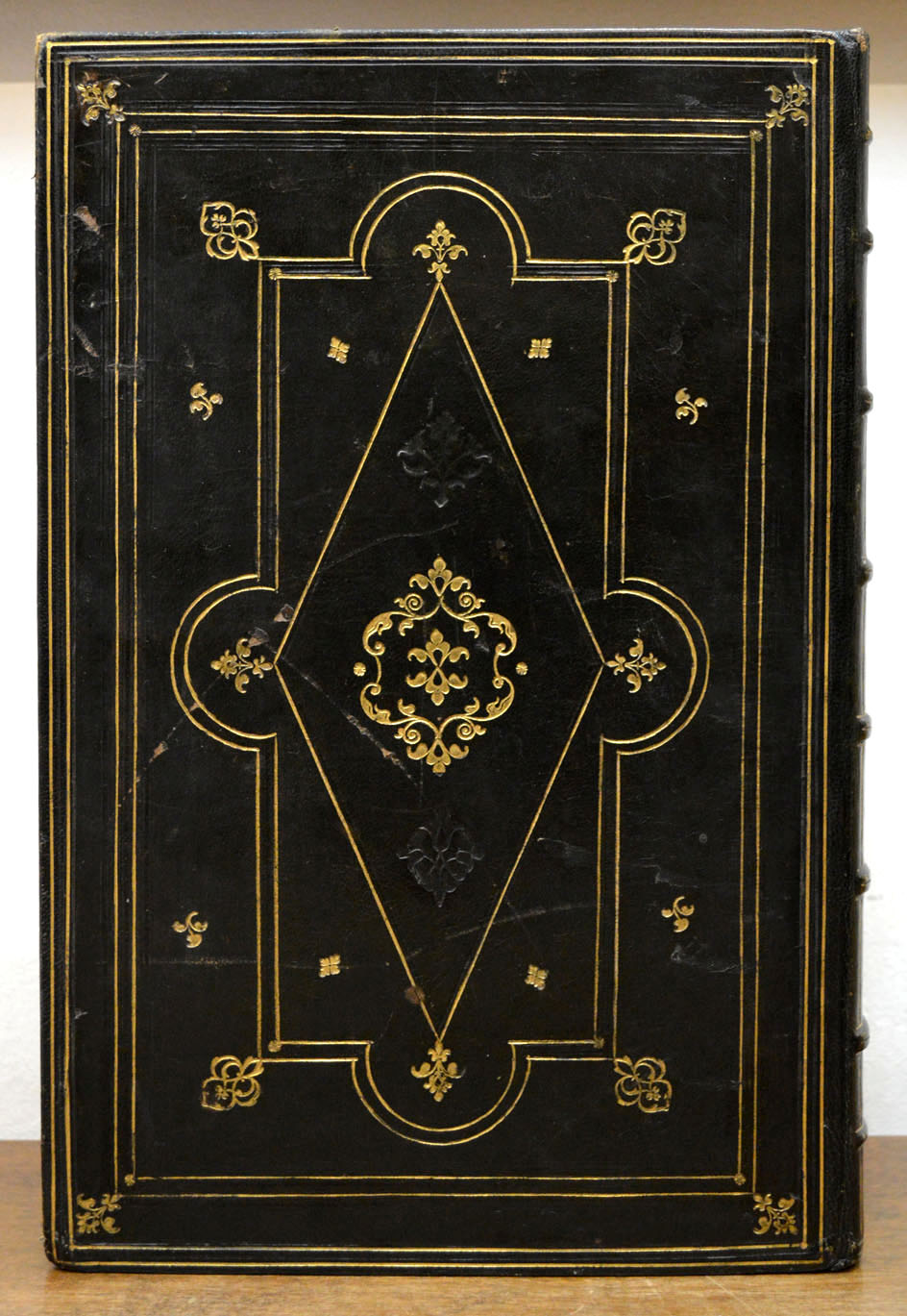

| The binding shown above was purchased some time ago by a friend who asked me recently if the decorative tools were really those of Picques as stated in the catalogue description shown below, or perhaps, could they be the tools of Picard? As I had not studied this mid 16th century period for several years it was hard to get my mind back into the labyrinth of arabesque imprints of Picard and Picques and a myriad other French binders in this period. After a week of searching every catalogue I have and every online database, I was beginning to wonder if this was really an old binding or some modern concoction. I knew I should find some of these tools somewhere they look so typical of the period and yet I could not find exact identical matching tools, with one or two questionable possibles. |
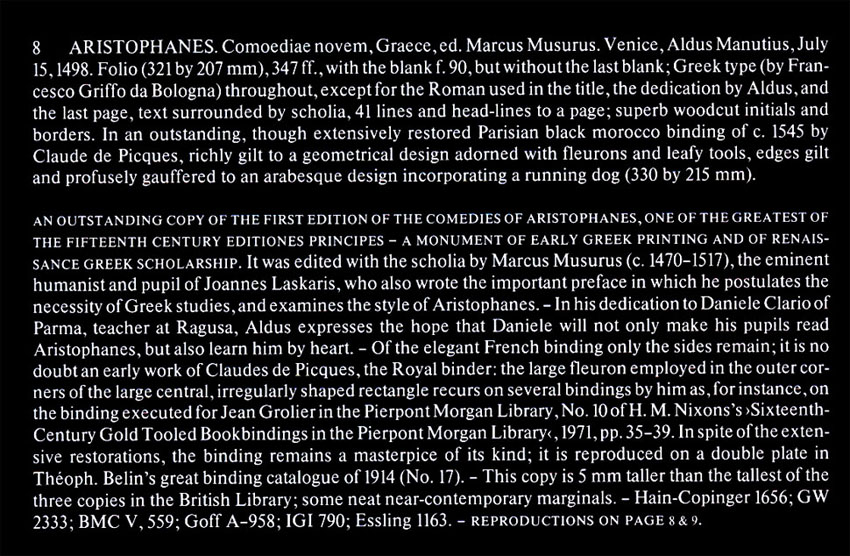
| I asked for high resolution scans of the imprints and received some excellent 1200 dpi images, these were so good that I could not accept a simply close looking imprint. Certainly Picard had a tool that looked nearly identical, that he used often. This same tool is found in Denise Gid's catalogue of French blindstamped bindings from the 15th and 16th centuries (Catalogue des reliures francaises estampees a froid, XVe-XVIe siecle, de la Bibliotheque Mazarine). She has catalogued it as "F 1" |
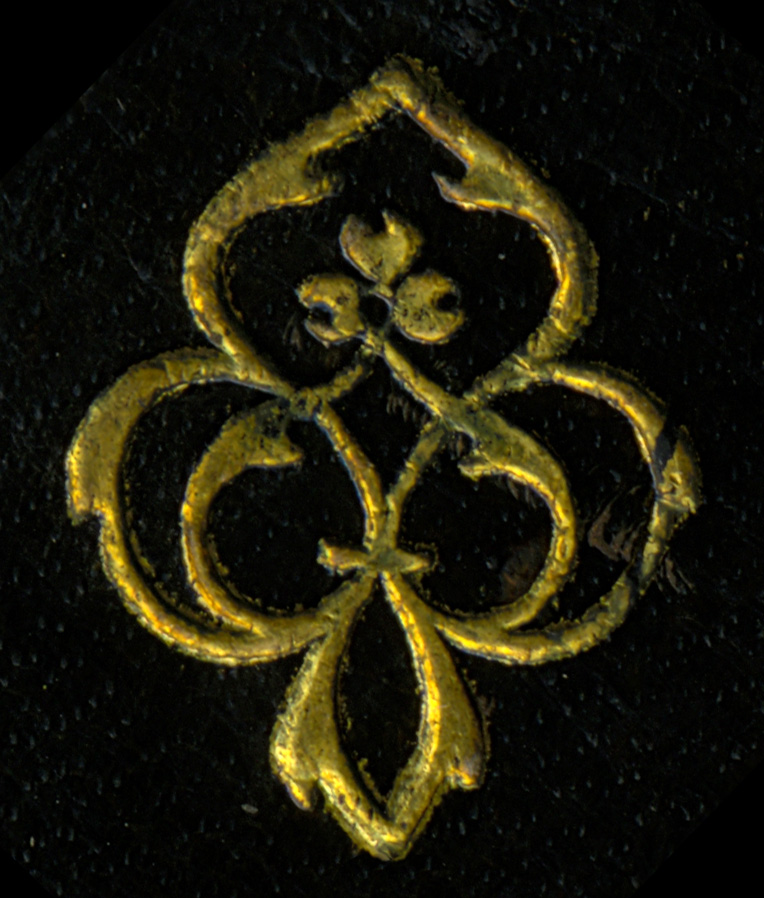
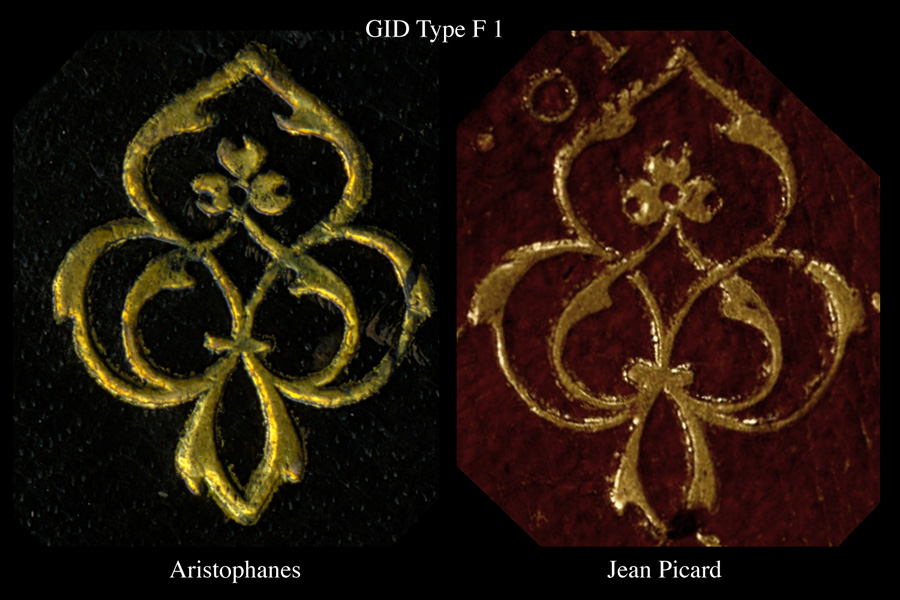
| If you were comparing the imprints shown in Comparative Diagram 1, with the naked eye, you would probably imagine that they have been made with the same tool, even with magnification they still look quite identical, Which is why the expert who wrote the above description of this binding was fooled. If you follow his reference to Nixon's PML 1971 example 10, the only tool you will recognize is this one, it may have been used later by Picques, but was originally owned by Picard and although it looks the same, it is not. It is only when you enlarge these imprints to 600 dpi or more that you begin to see irreconcilable differences, at 1200 dpi you are sure that they have not been made with the same tool. and this brings you back to square one, in trying to identify this binder. The Pecking Crow binder has a tool like this, and even at high magnification it looks identical but all or most of his other tools do not match. Probably the fleuron that is easiest to identify is the one I show in Comparative Diagram 2. |
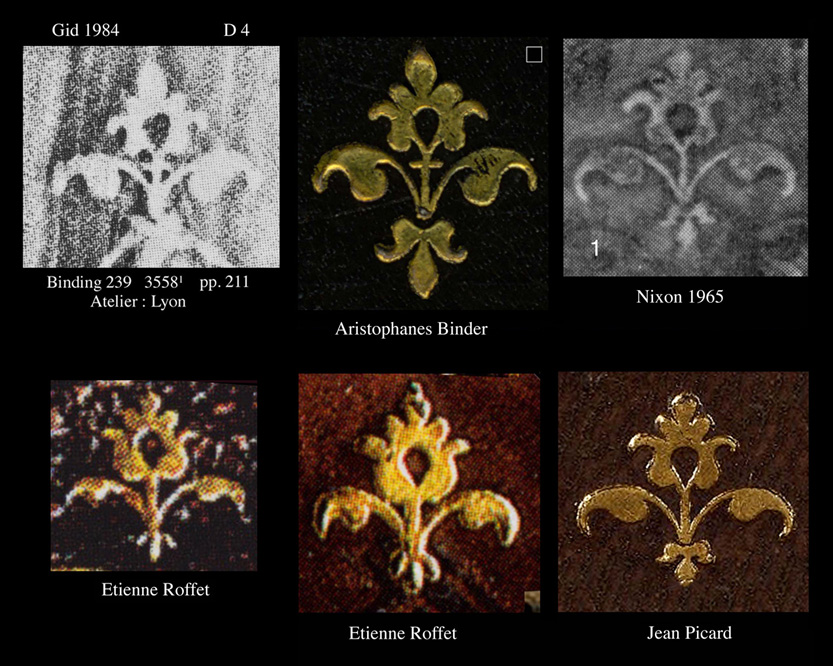
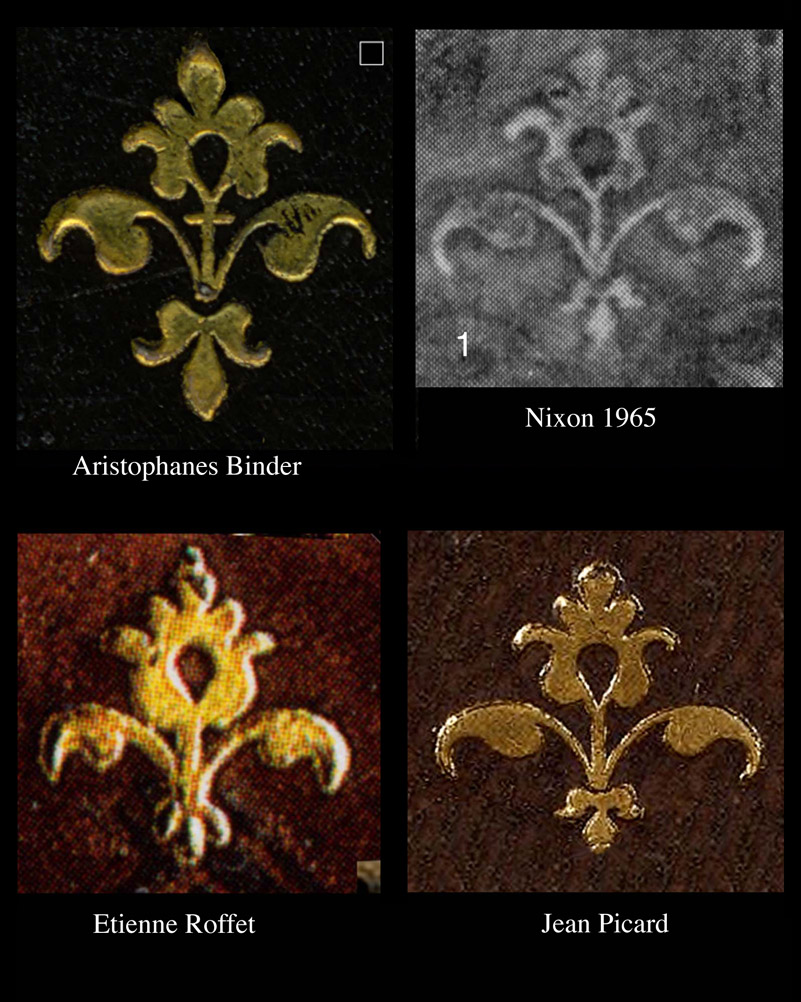
| In Comparative Diagram 3, we see these imprints enlarged to 600 dpi, these imprints are tiny and could fit on your smallest fingernail, however when enlarged you can see that the general design is similar, however the Aristophanes example has a small bar that forms a cross in the upper stem of the imprint. This bar is missing in most of the similar tools amongst contemporary binders, however earlier tools especially those from Lyon appear with crosses. There are a number in Gid's catalogue however her closest Type Model is"D 4" illustrated without a cross, while some examples found in the main catalogue (Tomb I) can be seen with crosses even though identified as "D 4" (see Binding 239 example in Comparative Diagram 2). The weakest part of Gid's catalogue appears to be these small tools that are sometimes not even accounted for in the item details. I suppose one might be tempted to call the Aristophanes example "D 4+". |
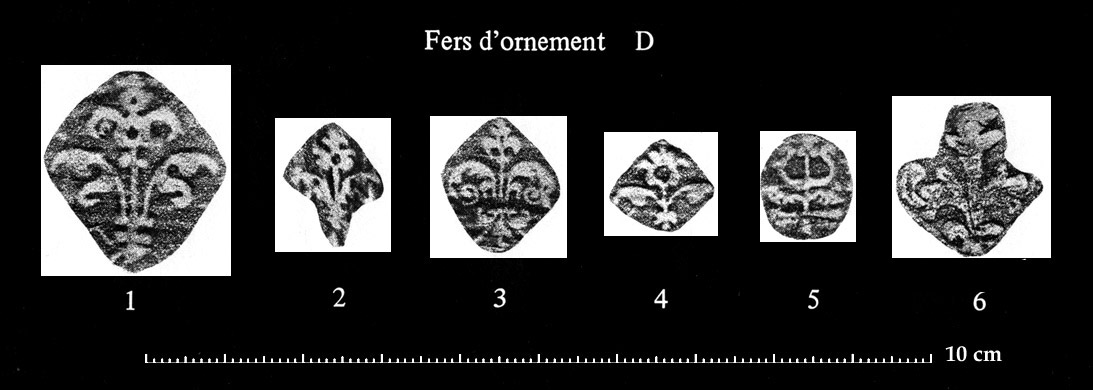
| information about the author | return to the home page of VIRTUAL BOOKBINDING |